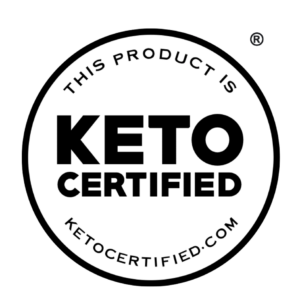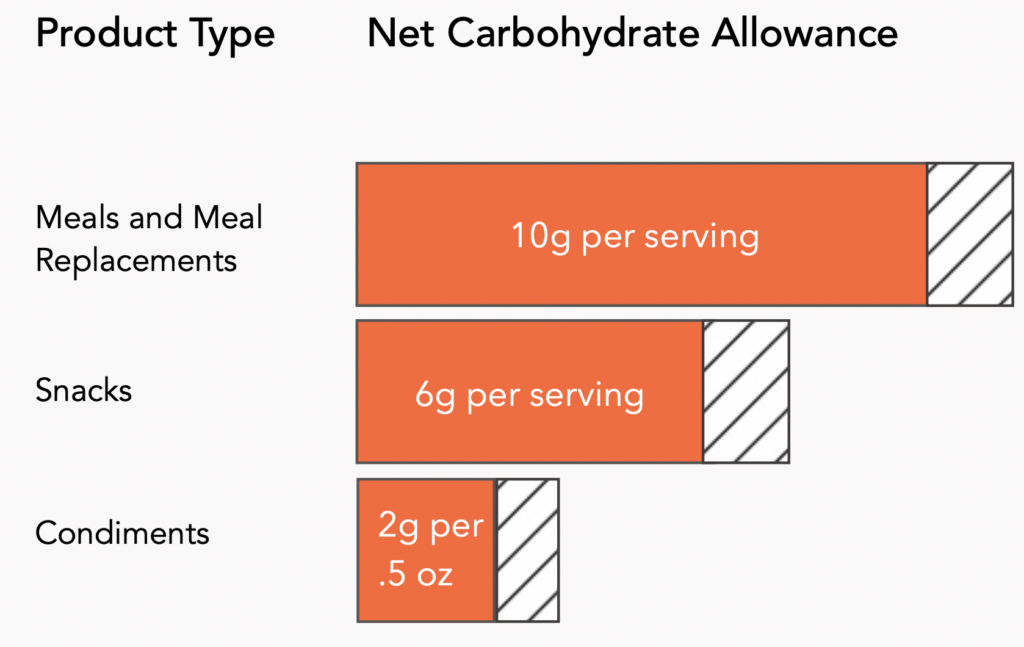Keto Certified Standards
KETO Certified Standards (2024)
Abstract
In 1925, Dr. Peterman first provided the strict requirements of the Ketogenic Diet but did not specify which foods were allowed or restricted. While public acclaim for the diet is growing, it has not yet become a primary therapeutic option due to its difficulty to adhere to and its serious side effects. The Paleo Foundation created KETO Certified Standards to help standardize the ketogenic diet while improving tolerability through the certification of compliant foods.
KEYWORDS
Net Carbohydrates, Ketogenic Diet, Compliance Challenges, KETO Certified Standards, Paleo Foundation, Palatability, Accessibility, Tolerability, KETO Certified, Ketogenic Certification
In the annals of metabolic research, the early 20th century stands as a seminal period during which nutrition experts ardently pursued diets capable of effecting metabolic alterations. Among these, the Ketogenic Diet, formulated by Dr. Peterman in 1925, represented a significant departure from prevailing low-carbohydrate dietary regimens. This groundbreaking diet mandated the consumption of 1g of protein per kilogram of body weight and imposed stringent restrictions on carbohydrate intake, necessitating a predominance of fats and proteins as dietary staples. Notably, the diet demonstrated marked efficacy in ameliorating seizure activities; however, Dr. Peterman’s pioneering work was not explicit in prescribing particular carbohydrate sources or delineating which food groups should be prioritized or excluded.
Despite the Ketogenic Diet’s therapeutic promise as a potential substitute for pharmacological interventions, its adoption as a mainstream therapeutic strategy was hampered by its stringent compliance requirements and the occurrence of adverse effects. Empirical studies have reported high attrition rates, with patients frequently discontinuing the diet or requiring substantial modifications within weeks of initiation. Consequently, despite its prospective benefits in treating pharmaceutically resistant epileptic conditions, the diet continues to be viewed as a high-risk strategy, seldom favored by clinicians over other established treatments.
Recognizing the imperative for ease and sustainability in dietary modification, The Paleo Foundation has proactively instituted KETO Certified Standards. These regulatory guidelines have engendered a substantial enhancement in the palatability and accessibility of foods compliant with the Ketogenic Diet. Such advancements not only incentivize sustained adherence but also contribute to an upward trajectory in compliance rates. As The Paleo Foundation continues its endeavors to facilitate lifestyle improvements within the community, it is anticipated that compliance will progressively augment, thereby potentially repositioning the Ketogenic Diet as a more viable therapeutic alternative.
1. Keto Certified Label
The “Keto Certified “Standards apply to all products certified by The Paleo Foundation for the Keto Certified program. Only products following the Keto Certified standards are explicitly given the rights to use federally registered Keto Certified logos, trademarks, certification marks, or other design marks hereinafter referred to as “Keto Certified label”.
1.1 Applicability. The Keto Certified label was developed and trademarked by The Paleo Foundation to identify food products that meet the standards of the ketogenic diet. The Keto Certified label is a certification mark with the use permitted only to those who have entered into a contractual agreement with the Paleo Foundation. The Keto Certified label was designed to establish an easily identifiable mark indicating that a product has met the strictures of the ketogenic diet and merit use of the Keto Certified label.
1.2 Guidelines for Keto Certified Producers
1.2.1 Promotional Materials. The Keto Certified label is allowed to be used on any company advertising materials, including packaging, promotional materials, point-of-purchase materials, websites, sales literature, banners, and company stationery, provided that the use of the Keto Certified label complies with the guidelines outlined in the Keto Certified Standards. If a company wishes to present the logos in a manner other than as described as outlined in section 1.3, The Paleo Foundation must approve the request and give written permission to the producer.
1.2.2 Display. Producers may display the Keto Certified label only on products that have been certified by The Paleo Foundation.
1.2.3 Agreement. Producers must have a contractual agreement with The Paleo Foundation to use the Keto Certified label.
1.2.4 Stationary. Producers may only use the trademark on company stationery if the entire product line has been audited and Keto Certified.
1.2.5 Logo Placement. If the entire product line has been audited and Keto Certified, producers may display the Keto Certified label on their entire website. If the entire product line was not certified, the Keto Certified label may appear on a page containing the audited and certified Keto Certified products only. Products that have not been audited and Keto Certified are not permitted to appear on the same page as the Keto Certified label, as this could mislead consumers.
1.3 Use of the Registered Keto Certified ® Label
1.3.1 Affidavit. To complete the application process, the applicant must sign an affidavit stating that all answers and statements provided in their application were true to the best of their knowledge.
1.3.2 Inspection and Audit. Use of the registered Keto Certified label is only permitted after the audit and certification of the applicant’s products by The Paleo Foundation.
1.3.3 Authorization. The Paleo Foundation retains the right to inspect, audit, and conduct net carbohydrate lab tests of the producer’s products to verify that all requirements are met.
1.3.4 Prohibited Use. Use of the Keto Certified label for any product that does not meet each of the Keto Certified Standards, that has not been audited, or that has not been given explicit permission is strictly prohibited.
1.3.5 Misuse. Misuse of the Keto Certified Label will result in immediate suspension of the agreement and/or prosecution.
1.3.7 Orientation. According to the Keto Certified Standards, the Keto Certified label must be:
⓵ Upright
⓶ Complete
⓷ Clearly Visible
2. Keto Certified Standards for Carbohydrate Content
The allowed carbohydrate content for based on the USDA standard serving size of a food product.
2.0.1 Meal. Meal and Meal Replacement products must not contain more than 10g net/effective carbohydrates per serving. For products that contain minimally processed, whole-food ingredients or ingredients with reduced digestibility, 12g net carbohydrate per serving is permissible.
2.0.2 Snack. Snack products must not contain more than 6g net/effective carbohydrates per serving. For products that contain minimally processed, whole-food ingredients or ingredients with reduced digestibility, 8g net carbohydrate per serving is permissible.
2.0.3 Condiments. Condiments must not contain more than 2g net/effective carbohydrates per serving. For products that contain minimally processed, whole-food ingredients or ingredients with reduced digestibility, 3g net carbohydrate per serving is permissible.
2.0.4 Auxiliary Category. Auxiliary Category products do not fit the “normal use” criteria of meals, meal replacements, snack products, or condiments. Auxiliary Category products will be judged on an individual, per-product basis for their eligibility in the Keto Certified program.
2.1 Allowed Carbohydrate Content
2.1.0 Additional Allowances. Meals, Meal Replacements, and Snacks which contain minimally processed, whole-food ingredients or a high concentration of ingredients with reduced digestibility are allowed an additional 2g to be permissible in the Keto Certified Standards. Condiments are allowed an additional 1g per 0.5oz for reduced digestibility or low-usage threshold for the product (such as hot sauce). Quantification of Net Carbohydrates for Keto Certified eligibility may also be determined using a High-Performance Anion-Exchange Chromatography Assay.
2.2 Prebiotic Fiber
2.2.1. Prebiotic Fiber. Prebiotic fiber is adjusted for when net carbohydrate is calculated for Keto Certification eligibility.
Product formulations may be required for accurate dietary fiber calculations. Prebiotic fibers are fermentable fibers that selectively contribute to the growth and maintenance of commensal bacterial species such as Bifidobacteria and Lactobacilli. In the simplest terms, a prebiotic is a selectively fermented ingredient that allows specific changes, both in the composition and/or activity in the gastrointestinal microflora, that confers benefits upon host well-being and health.
The three criteria of prebiotics are that they must be: (a) Resistant to gastric acids, hydrolysis by mammalian enzymes, and gastrointestinal absorption; (b) Fermented by large intestinal microflora; and (c) selectively stimulate the growth and/or activity of intestinal bacteria associated with health and well-being. The non-digestible carbohydrates can be broken down into groups and include: Resistant starches (types I, II, III, IV, V)
The non-digestible carbohydrates can be broken down into groups, and include:
|
Resistant Starches |
Oligosaccharides |
Polysaccharides |
|
Resistant starches (Types I, II, III, IV, V) |
Non-digestible oligosaccharide fibers, including fructooligosaccharides, galactooligosaccharides, xylooligosaccharides, isomaltooligosaccharides , and lactulose). |
Non-digestible polysaccharide fibers, including cellulose, hemicellulose, polydextrose, beta-glucans, pectins, mucilages, galactomannans, glucomannans, chitin, and chitosan. |
3. Allowed Ingredients for Keto Certification
3.1 Allowed Ingredients. The following ingredients are eligible for the use of the Keto Certified label, provided that they do not exceed total carbohydrate criteria. Allowed ingredients will be amended from time to time as necessary. These ingredients include, but are not limited to:
4. Applicability of Exogenous Ketones
4.1 Exogenous Ketones. Exogenous ketone supplementation is allowed in the Keto Certified program. These include naturally-derived beta-hydroxybutyrate compounds such as beta-hydroxybutyrate mineral salts, medium-chain triglycerides, and ketone esters.
5. Disallowed Ingredients List
5.1 Disallowed Ingredients. The following ingredients are completely disallowed ingredients in the Keto Certified Standards. Additional ingredients may be added or removed from this list based on new information or research.
|
Partially-Hydrogenated Oils |
Sweeteners |
Artificial Flavors |
|
Partially hydrogenated trans fats such as soybean, margarine, and vegetable oils. |
Artificial sweeteners such as saccharin, cyclamate, acesulfame, aspartame, and sucralose. Sugar alcohols (polyols) are permitted. |
Artificial flavors are not allowed in the Keto Certified program. |
If you have any further questions regarding items on this list or items that are not listed, please contact us at info@paleofoundation.org
Reevaluating the Therapeutic Potential of the Ketogenic Diet through KETO Certified Standards
Historical Context and Initial Promise
The Ketogenic Diet, introduced in the early 20th century by Dr. Peterman, stands as a historically significant dietary intervention aimed at altering metabolic pathways. Its unique emphasis on high fat and protein intake positioned it as a potential therapeutic option for mitigating seizure activities. While the diet has demonstrated efficacy in specific clinical scenarios, its rigorous compliance requirements and potential for adverse effects have largely constrained its widespread adoption.
Limitations and Barriers to Adoption
Notably, the literature suggests that the Ketogenic Diet faces significant barriers to becoming a primary therapeutic modality. Patients frequently report compliance challenges, with high attrition rates observed within weeks of initiation. The absence of explicit guidelines on carbohydrate sources and the prioritization of specific food groups further complicates its application. Consequently, clinicians often opt for other established treatments, relegating the Ketogenic Diet to a niche status within the spectrum of therapeutic options.
Innovations through KETO Certified Standards
The introduction of KETO Certified Standards by The Paleo Foundation marks a pivotal moment in addressing the diet’s shortcomings. These standards offer a systematic framework aimed at enhancing the palatability, accessibility, and overall tolerability of foods that are compliant with the Ketogenic Diet. By tackling these previously unaddressed issues, the standards serve to incentivize sustained adherence, thereby reducing attrition rates observed in previous studies.
Future Implications and Conclusion
As a result of these advancements, it is plausible to anticipate an upward trajectory in the rate of compliance, thereby repositioning the Ketogenic Diet as a more viable and less risky therapeutic alternative. The work of The Paleo Foundation, in this regard, serves as a catalyst for a broader reconsideration of the diet’s utility. As adherence is expected to continue improving over time, it becomes increasingly pertinent to revisit the Ketogenic Diet within clinical settings, further validating its efficacy and safety through rigorous scientific inquiry.
The proactive initiatives by The Paleo Foundation offer promise not only for enhancing lifestyle but also for potentially redefining the utility of the Ketogenic Diet as a therapeutic intervention. Therefore, it is essential to conduct further research to quantify the long-term impacts of these KETO Certified Standards, both in terms of patient compliance and clinical efficacy.
Pendergrass, K., Eyer, K. (2023). KETO Certified Standards 2024. The Paleo Foundation.
This work is licensed under a Creative Commons Attribution 4.0 International License.
 Prebiotic Fiber: Why “Just Eat Real Food” Isn’t as Good of a Mantra as You Think.
Prebiotic Fiber: Why “Just Eat Real Food” Isn’t as Good of a Mantra as You Think.


